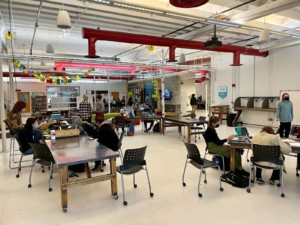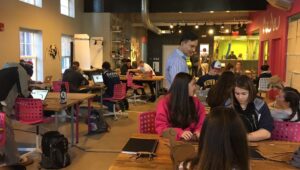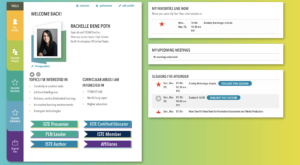Blended Components
Viswanath Shankar calls blended learning “old wine in a new bottle”, and while this introduction to the concept is a little tortured and focused on corporate learning rather than k-12, his definitions of multi-modal learning are useful.
E learning technology can be put to good use while learning through information, interaction and collaboration. This not only reduces cost attributed to enlarged periods of non productive activity on the part of the employees, commuting and employing instructors, but also creates reusable content, and reiterates core messages and concepts to ingrain them in the minds of the learners. At the same time, the classroom sessions develop interpersonal skills and the ability to communicate face to face.
Learning through information
Material based information is the first coherent step towards starting a learning program. Web based material can now be handed to the learners, thanks to e learning techniques, which can render the learning program easy to deliver and faster to implement. Making the information accessible all the time will give learners the liberty of scrolling through the content at their own convenience, which, in turn, will enhance understanding and enthusiasm.
Learning through interaction
The learner-instructor, learner-content, learner-learner, and learner-infrastructure interactions become all the more important in a blended learning environment. Web can assist all the above mentioned forms of interaction, which, together, help retain the knowledge that is acquired through information .Web simulations of real life situations allow learners to apply their knowledge practically, without the possibility of them affecting your business directly.
Learning through collaboration
Collaborative learning includes peer to peer discussions, conference calls, chat, team rooms and instant messaging. Technology has enhanced the concept of collaboration manifold, where learners, even though geographically remote, can communicate in real time. The collaborative environment also heightens the chances of collaboration between e learners and subject matter experts (SMEs).
Learning through classroom interactions
Conventional, tested and, by far, one of the most effective approaches to learning, classrooms are the best places to personally connect to peers and instructors. No technology can replace the advantages of this approach, which is exactly why no e learning or blended learning model will skip this element for any reason. But, as one would like to believe, blended learning has never attempted to replace classroom based learning. On the contrary, technology based learning takes care of the basic, mechanical and mundane aspects of learning to allow classroom based training centre around discussions on already learnt subject matter and behavioral and psychological modifications.
Bottomline
Blended learning involves the appropriate blend of varied components including courses, content portions, IM pings, blog feedback, and many other things. The ubiquitous problems of speed, scale and impact associated with most e learning models can be successfully solved by blended learning. Applying blended learning to all your learning needs will definitely leverage your organization vis a vis your competitors.
In a k-12 environment, in contrast to a tech-rich classroom, I define blended learning as 1) a shift in instructional responsibility, for at least a portion of the day (or course), to an online or computer-based environment 2) done intentionally to improve learning and/or operating productivity. Viswanath’s definitions provide a useful frame for an intentionally designed learning environment.








0 Comments
Leave a Comment
Your email address will not be published. All fields are required.